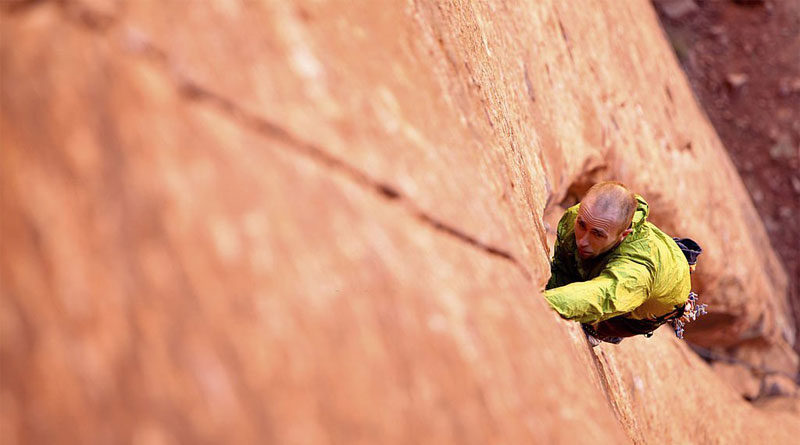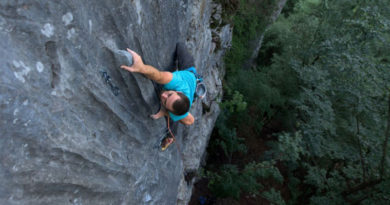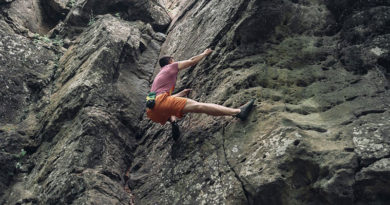Is Trad Climbing Dangerous?
Trad climbing can be dangerous if proper precautions are not taken or if the climber is not experienced enough. Trad (short for “traditional”) climbing involves placing removable gear, such as nuts and cams, into cracks and other features of the rock to protect the climber in the event of a fall. This type of climbing requires a high degree of skill and experience to do safely, and the risks involved can be substantial.
Some of the dangers of trad climbing include the risk of falling, the potential for gear to fail or pull out, the possibility of getting lost or stranded, and the hazards associated with exposure to the elements. Additionally, trad climbing often involves long, multi-pitch routes, which can increase the risks associated with fatigue and dehydration.
To reduce the risks of trad climbing, you must receive proper training and instruction, carefully assess the conditions and route before beginning a climb, use high-quality gear appropriate for the climb, and always be aware of your surroundings and potential hazards. You can enjoy the challenge and beauty of trad climbing while minimizing the risk of accidents and injury by taking these precautions and being aware of the risks involved.
The Risks of Trad Climbing
Trad climbing involves a number of potential dangers that climbers need to be aware of in order to stay safe. Some of the main risks associated with trad climbing include:
- Falling: Falling is one of the biggest risks in trad climbing. Because trad climbers place their own protection, they need to be skilled at assessing the rock and placing gear in a way that will protect them in the event of a fall. Even with proper protection, falls can still happen, and they can result in serious injury or death.
- Gear Failure: Gear failure is another potential risk in trad climbing. If the gear placed by a climber fails or pulls out, the climber can fall and suffer serious injury. To mitigate this risk, climbers need to carefully inspect their gear before using it and make sure that it’s appropriate for the climb.
- Getting Lost or Stranded: Trad climbing often takes place in remote or hard-to-reach locations, and climbers can get lost or stranded if they’re not careful. It’s important for climbers to carefully plan their route and bring enough food, water, and supplies to get them through the climb.
- Exposure to the Elements: Trad climbers can be exposed to the elements for extended periods of time, which can lead to hypothermia, heat exhaustion, or dehydration. Climbers need to bring appropriate clothing and gear for the conditions and be prepared to deal with changing weather.
- Fatigue and Dehydration: Trad climbing can be physically and mentally exhausting, especially on long, multi-pitch routes. Climbers need to stay hydrated and take breaks when needed to avoid fatigue and exhaustion, which can increase the risk of accidents.
In order to minimize the risks of trad climbing, climbers need to be skilled, prepared, and mindful of the dangers involved. In the next section, we’ll explore some ways to mitigate these risks and stay safe while climbing.
How to Mitigate the Risks of Trad Climbing?
While trad climbing can be dangerous, there are steps that climbers can take to mitigate the risks and stay safe while climbing. By following these strategies, you can minimize the risks of trad climbing and stay safe while enjoying the climb. However, it’s important to remember that trad climbing still involves inherent risks, and accidents can still happen. In the next section, I’ll explore some examples of accidents and injuries that have occurred in the past.
Here are some strategies to consider:
Proper training and instruction
Trad climbing requires a high degree of skill and experience. Before attempting to climb on your own, it’s important to receive proper training and instruction from a qualified climbing instructor. This will help you learn the necessary skills for placing gear, assessing the rock, and navigating the climb.
Assessing the conditions and route
Before starting a climb, it’s important to carefully assess the conditions and route. Check weather reports and pay attention to any warnings or advisories. Study the route ahead of time and make note of potential hazards, such as loose rock or difficult sections. This will help you prepare for the climb and minimize the risks.
Choosing the right gear
Choosing the right gear is essential for trad climbing. Make sure you have a variety of gear options, including different sizes of nuts and cams, to accommodate the different features of the rock. Check your gear carefully before use and retire any gear that shows signs of wear or damage.
Being aware of surroundings and potential hazards
Trad climbing requires a high degree of awareness and attention to detail. Be mindful of your surroundings and watch for potential hazards, such as loose rock, falling debris, or other climbers. Stay alert and be prepared to adjust your plans if conditions change.
Staying hydrated and well-rested
Trad climbing can be physically and mentally demanding, and staying hydrated and well-rested is essential for staying safe on the climb. Bring plenty of water and snacks to stay hydrated and energized, and take breaks as needed to rest and recover.
Examples of Accidents and Injuries in Trad Climbing
Despite the precautions that climbers take, accidents and injuries can still occur while trad climbing. Here are some examples of accidents and injuries that have occurred in the past:
- Gear Failure: In 2017, a climber in Yosemite National Park fell 30 feet when a piece of gear failed. The climber suffered a broken ankle and was rescued by park rangers.
- Falling Rock: In 2019, a climber in Colorado was hit by a falling rock while trad climbing. The climber suffered a head injury and was airlifted to a hospital for treatment.
- Hypothermia: In 2016, a group of climbers in Scotland was caught in a sudden snowstorm while trad climbing. Two of the climbers suffered from hypothermia and had to be rescued by a search and rescue team.
- Getting Lost: In 2015, a climber in California got lost while attempting a trad climb. The climber was stranded on a cliff overnight and had to be rescued by a search and rescue team.
These examples illustrate the potential dangers of trad climbing and the importance of taking precautions to stay safe. While accidents and injuries can happen, it’s important to remember that many trad climbers enjoy the sport without incident. By being prepared, using proper technique, and staying alert, climbers can minimize the risks and enjoy the climb.
Conclusion
Trad climbing can be a thrilling and rewarding experience, but it also involves inherent risks. While accidents and injuries can occur, you can take steps to mitigate the risks and stay safe while climbing. Proper training, careful assessment of the route and conditions, and attention to gear and surroundings are all essential for staying safe while trad climbing. It’s also important to remember that accidents can still happen, and you should be prepared to adjust your plans or seek help if needed. By staying informed, prepared, and aware, you can enjoy the climb while staying safe and minimizing the risks.




